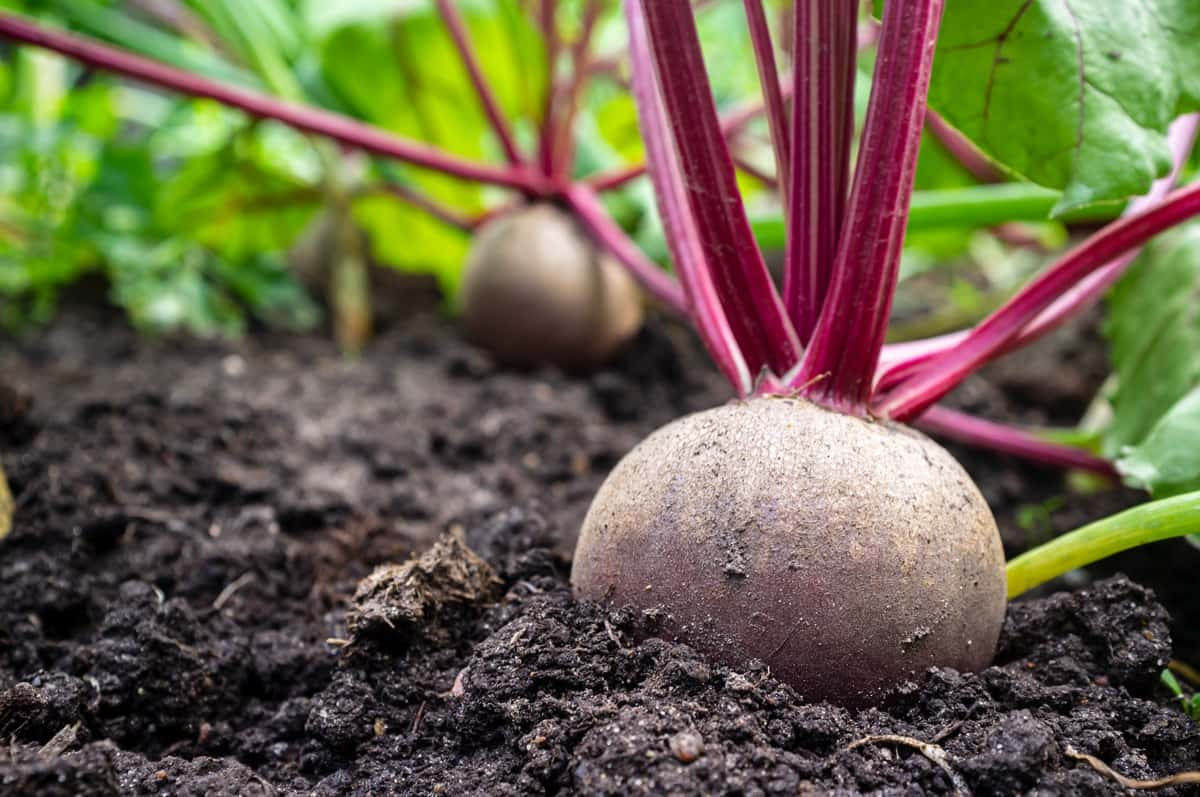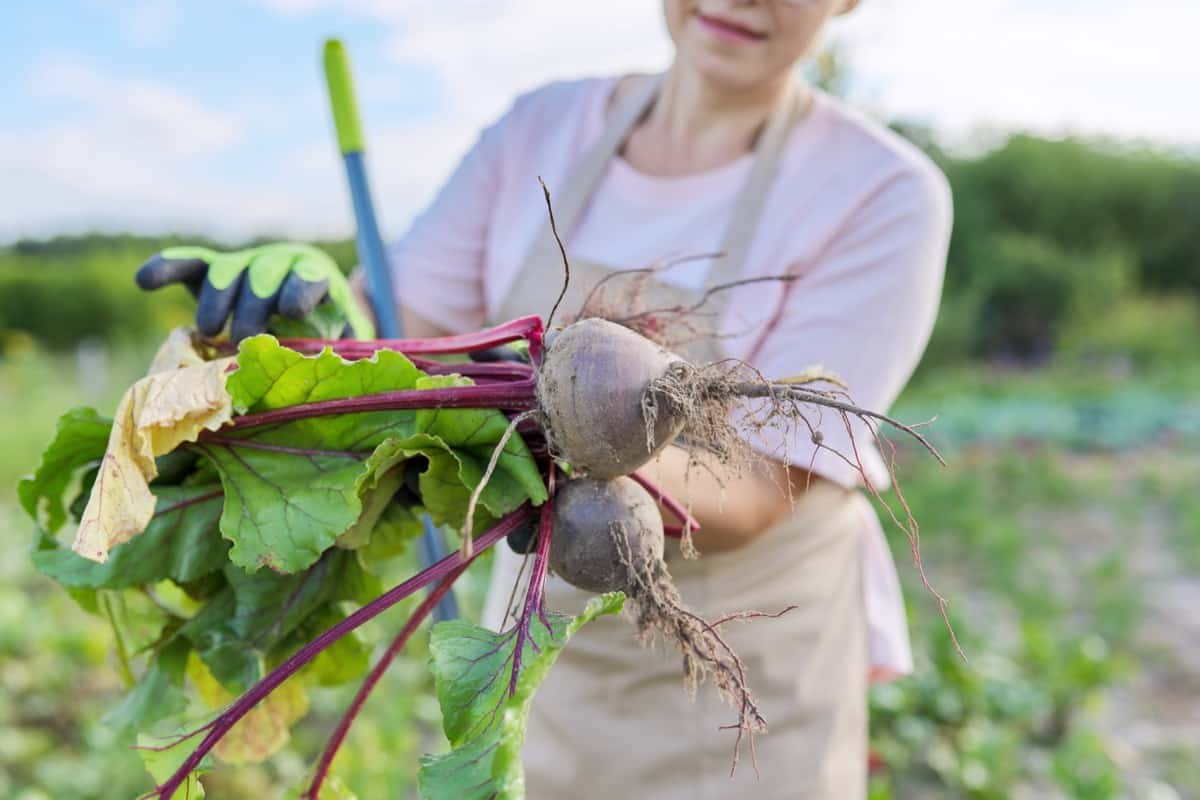Beetroot is a popular vegetable among many gardeners, but like any plant, it has its share of issues. Many gardeners ask, “What is eating my beetroot leaves?” or “Why are my beetroot leaves dying?” These questions indicate the most common beetroot problems experienced by many garden enthusiasts. Therefore, this article will delve into these issues and discuss the diseases of beetroot and their management, beetroot pests and diseases, and other potential problems that might affect your beetroot plants.

10 Common Problems With Garden-Grown Beetroot Plants
Yellow Leaves on Garden-grown Beetroot Plants
One of the most common issues gardeners face with beetroot plants is yellowing leaves. This is often due to a lack of essential nutrients, such as nitrogen, necessary for the plant’s growth and chlorophyll production. If your beetroot leaves turn yellow, it’s a sign that the plant is not getting enough nitrogen.
However, there could be other causes, such as poor drainage or overwatering, which can lead to root diseases and yellowing leaves. The solution to this problem is to ensure the plants are well-fertilized with a balanced fertilizer and watered properly. Prevent excessive watering to avoid root rot and ensure proper plant drainage.
Wilting Beetroot Plants in the Garden
Wilting is another common issue with beetroot plants. This often happens due to inadequate water supply, especially during hot weather. Beetroot plants require plenty of water to thrive; without it, they can quickly wilt. Diseases of beetroot can also cause wilting, especially if the roots are affected. The best way to handle this is to ensure your beetroot plants get enough water, especially during dry spells. Water sparingly to avoid overwatering, which can lead to issues. Provide deep but infrequent watering to ensure the roots receive sufficient moisture.
Pest Infestation on Beetroot Plants in the Garden
Pests are often a significant problem for beetroot plants. Beet leaf miner is one of the most common beetroot pests and diseases. This insect burrows into the plant leaves, causing them to wilt and die. Utilize ladybugs and lacewings as natural predators for this issue. Additionally, crop rotation and proper garden sanitation can help keep these pests at bay. Aphids are another common pest. They can be managed by regular inspections and using water sprays or insecticidal soaps to remove them.
Stunted Growth in Garden-grown Beetroot Plants
Stunted growth is often a sign of a problem in the root system. If your beetroot plants are not growing as expected, it could be due to compacted soil, which makes it hard for the roots to expand and draw up nutrients. Poor nutrition can also cause stunted growth, so ensure your soil is well-enriched with organic matter and that the plants are well-fed. Regular weeding can also help, as weeds compete with beetroot plants for nutrients, leading to stunted growth.
Root Rot in Garden-grown Beetroot Plants
Root rot is a severe beetroot disease that needs urgent control. This condition often arises from overwatering or poor drainage. The soil becomes waterlogged, causing the roots to decay and rot. The plants will then begin to wilt and die. To prevent this, ensure your beetroot plants are planted in well-draining soil and not overwatered. Crop rotation can also help reduce the chances of root rot.
Leaf Spots on Beetroot Plants in the Garden
Leaf spots are a common problem with beetroot plants. These are often caused by a fungal disease known as Cercospora leaf spot, one of the well-known diseases of beetroot. Symptoms begin with tiny dark spots on leaves, which grow and lead to yellowing and leaf death. If left untreated, this disease can severely affect the health and yield of your beetroot plants. To manage this disease, remove and destroy infected leaves and maintain good air circulation around the plants to reduce humidity levels. Also, avoid watering from above, as this can encourage the spread of the disease.
In case you missed it: 7 Common Problems with Bitter Melon/Bitter Gourd Plants: Treatment and Solutions

Beetroot Plants Not Producing Roots in the Garden
Another common problem is beetroot plants not producing roots. This is often due to a lack of phosphorus, an essential nutrient for root development. If your beetroot plants have lush, healthy leaves but no roots, it may be because the soil is deficient in phosphorus. Adding a phosphorus-rich fertilizer to the soil can help solve this problem. Other reasons could be overcrowding or planting the seeds too shallowly. Ensure your beetroot plants have plenty of space to grow and the seeds are planted at the correct depth.
Leaf Curling in Garden-grown Beetroot Plants
Leaf curling is another issue that can affect beetroot plants. Several factors, including pest infestations, diseases, or environmental stress can cause this. Beetroot pests like aphids and beet leaf miners can cause the leaves to curl as they feed on the plant. Various diseases can also result in leaf curling.
In addition, environmental stress, such as heat, drought, or wind, can cause the leaves to curl. Addressing these issues can help restore your beetroot plants to health. For instance, using natural predators, applying appropriate treatments, or providing adequate water and shelter can help manage these problems.
Fungal Diseases Affecting Beetroot Plants in the Garden
Fungal diseases are a common problem in beetroot plants. They often manifest as spots on the leaves and wilting or rotting roots. For instance, Cercospora leaf spot is a common fungal disease affecting beetroot plants. Another is powdery mildew, a white powdery substance on the leaves. Fungal diseases thrive in wet and humid conditions, so avoiding creating such an environment is crucial. Practice good sanitation, rotate crops, and avoid overhead watering to minimize the risk of these diseases. If a fungal disease is detected, remove and destroy infected plant parts, and apply a suitable fungicide.
Nutrient Deficiencies in Garden-grown Beetroot Plants
Lastly, nutrient deficiencies can lead to a host of problems in beetroot plants. As mentioned earlier, yellowing leaves can indicate nitrogen deficiency, while a lack of roots may be due to a phosphorus deficiency. Similarly, a potassium deficiency can lead to poor overall growth and reduced yield.
In case you missed it: 10 Common Problems With Garden-Grown Cauliflower Plants: Treatment and Solutions

Therefore, ensuring that your beetroot plants get a balanced supply of nutrients is crucial. This can be achieved by using well-balanced fertilizers and adding organic matter to the soil. Moreover, regular soil tests can help identify nutrient deficiencies early so that they can be addressed promptly.
Conclusion
Various problems can affect Beetroot plants, from pest infestations and diseases to nutrient deficiencies and environmental stressors. However, with the right knowledge and management practices, you can ensure that your beetroot plants thrive in your garden. Remember that prevention is often the best cure, so good gardening practices such as crop rotation, regular watering, and proper fertilization can go a long way in preventing many of these problems.
- Feed Your Flock for Less: Top 10 Tips to Save on Chicken Feed
- Ultimate Guide to Ossabaw Island Hog: Breeding, Raising, Diet, and Care
- Hatching Answers: The Top 10 Reasons Your Chickens Aren’t Laying Eggs
- Eggs and Economics: Breaking Down the Cost of Raising Backyard Chickens
- Defend Your Greens: Proven Methods to Keep Iguanas Out of Your Garden
- Ultimate Guide to Cinnamon Queen Chicken: A Comprehensive Guide for Beginners
- Ultimate Guide to California Tan Chicken: Breeding, Raising, Diet, Egg-Production and Care
- Ultimate Guide to Marsh Daisy Chicken: Breeding, Raising, Diet, and Care
- 10 Types of Chicken Farming Businesses You Can Start for Profits